Key takeaways
- Activist teacher resources empower educators to challenge injustices and promote empathy through critical pedagogy.
- Remote learning tools provide flexibility and maintain dialogue, enabling collaboration among diverse students even when physically apart.
- Choosing learning resources should focus on relevance, accessibility, and the inclusion of marginalized voices to foster engagement.
- Effective organization and thoughtful sharing of resources enhance their accessibility and impact on teaching and learning.

Understanding activist teacher resources
Activist teacher resources go beyond traditional materials; they are tools that empower educators to challenge injustices and amplify marginalized voices. When I first encountered these resources, I felt a mix of excitement and responsibility—like holding a key that could unlock new perspectives for my students. Have you ever wondered how a simple lesson plan could inspire students to question the world around them?
These resources are deeply rooted in social justice and critical pedagogy, which means they not only provide information but also encourage action and reflection. I remember using a case study from an activist resource that sparked a heated but meaningful class discussion about inequality. It was a moment that reminded me why teaching is more than transferring knowledge—it’s about fostering empathy and change.
Using activist teacher resources requires an openness to discomfort and growth, both for educators and learners. I’ve found that integrating these materials pushes me to confront my own biases and continuously evolve in my practice. What could be more powerful than education that invites us all to become active participants in shaping a fairer society?
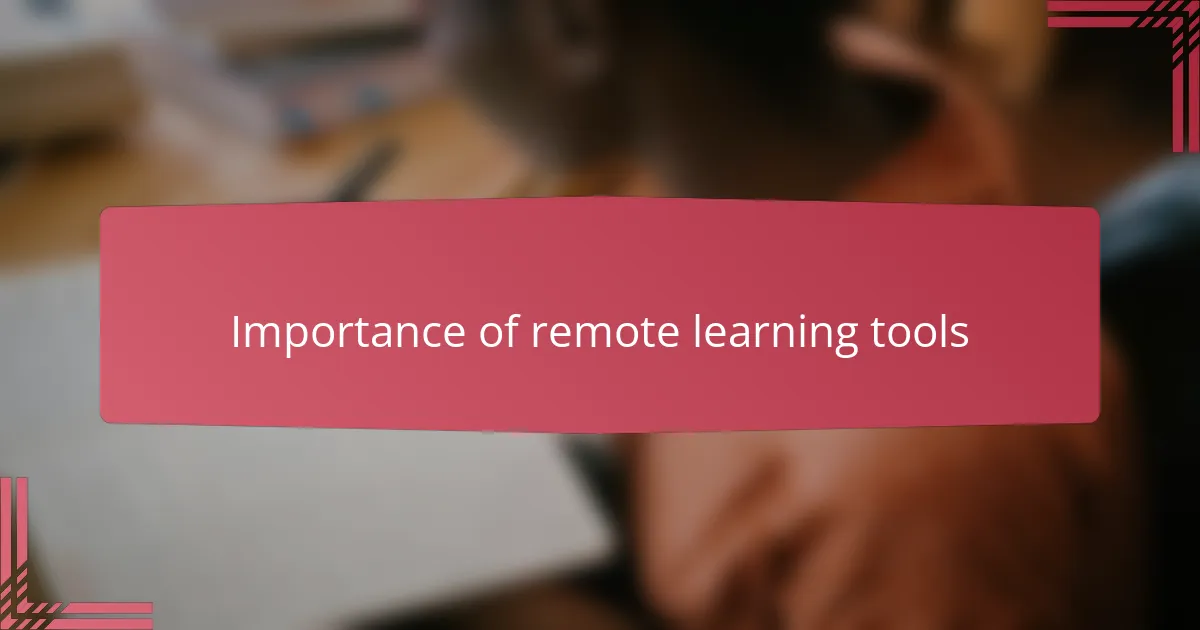
Importance of remote learning tools
Remote learning tools are more than just technology—they are lifelines that keep education alive when physical classrooms aren’t an option. I recall the early days of transitioning online, feeling overwhelmed yet hopeful as these tools bridged the gap between me and my students. Have you experienced that moment when a virtual platform suddenly becomes a space for lively debate and shared learning despite the distance?
These tools also offer flexibility that traditional classrooms often can’t, catering to diverse learning styles and schedules. From my experience, having the right resources at my fingertips meant I could adapt lessons quickly and keep the momentum going. Isn’t it incredible how something as simple as a shared document or video call can transform isolation into connection?
Crucially, remote learning tools help maintain the spirit of activist teaching by fostering continuous dialogue and collaboration. I’ve witnessed students from different backgrounds coming together online, exchanging ideas, and feeling empowered to raise their voices. How else can we ensure that the fight for justice in education persists, no matter the classroom’s location?

Criteria for selecting learning resources
Choosing the right learning resources isn’t just about content; it’s about how that content resonates with the values I hold as an activist teacher. I look for materials that center marginalized voices and challenge dominant narratives because I want my students to see perspectives they might not encounter otherwise. Have you ever noticed how a single story, when thoughtfully selected, can open up a classroom to empathy and critical thinking?
Relevance is another key criterion. I ask myself whether a resource connects with my students’ realities and experiences, especially in remote settings where engagement feels harder to spark. I remember selecting a digital resource that addressed environmental justice in a community similar to my student’s own; it made the discussion tangible and urgent in a way generic materials never could.
Lastly, I consider accessibility—not just in terms of technology but also in language and format. Remote learning can be isolating, so I strive to choose resources that everyone can navigate and understand without extra barriers. Hasn’t it happened to you that a resource was brilliant in theory but felt unreachable in practice? Avoiding that keeps the learning inclusive and truly empowering.
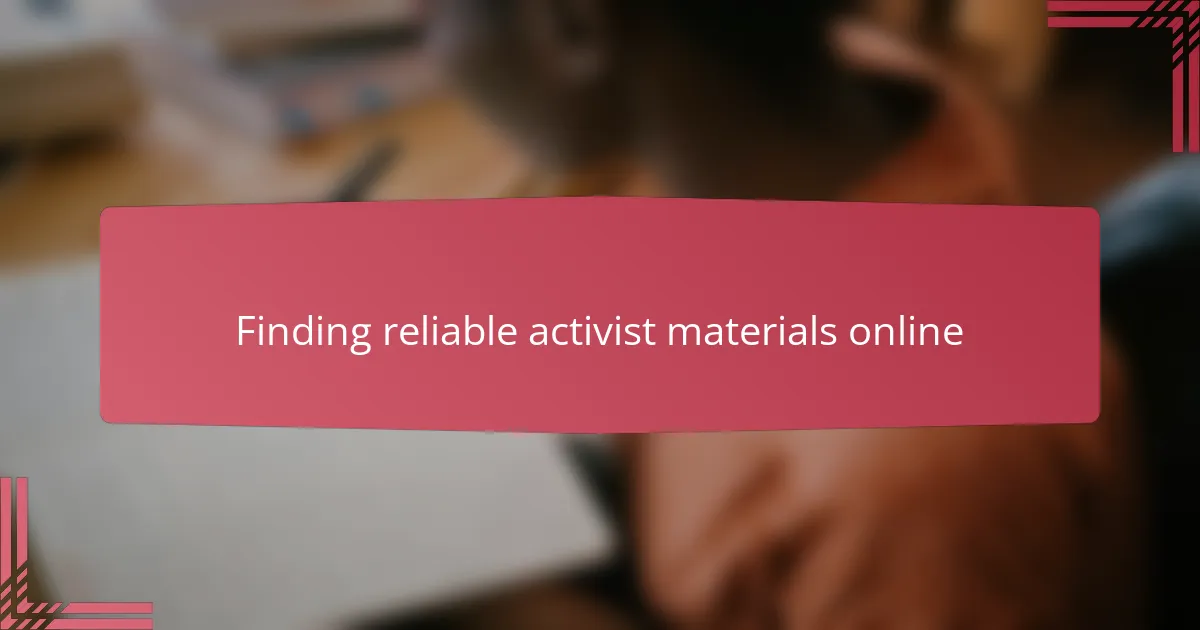
Finding reliable activist materials online
Finding reliable activist materials online can feel like navigating a vast sea of information, but I’ve learned to trust sources that are transparent about their origins and committed to social justice. Have you ever stumbled upon a resource that claimed to be activist-oriented but lacked depth or perpetuated stereotypes? That experience taught me to dig a little deeper before integrating any content into my teaching.
I often rely on networks of educators and activists who share vetted materials, which feels like having a trusted compass in this digital terrain. When a colleague recommended a website that consistently updated its resources with current events and critical perspectives, it became my go-to. How reassuring it is to know that others have done some of the heavy lifting in filtering out unreliable or tokenistic content?
Lastly, I pay close attention to the feedback from students and fellow educators after using materials, which helps me judge their impact and reliability over time. One time, a digital booklet on racial justice sparked not just discussion but also personal reflections among my students, confirming the resource’s authenticity and power. Isn’t that the ultimate test—how these materials resonate in real learning moments?
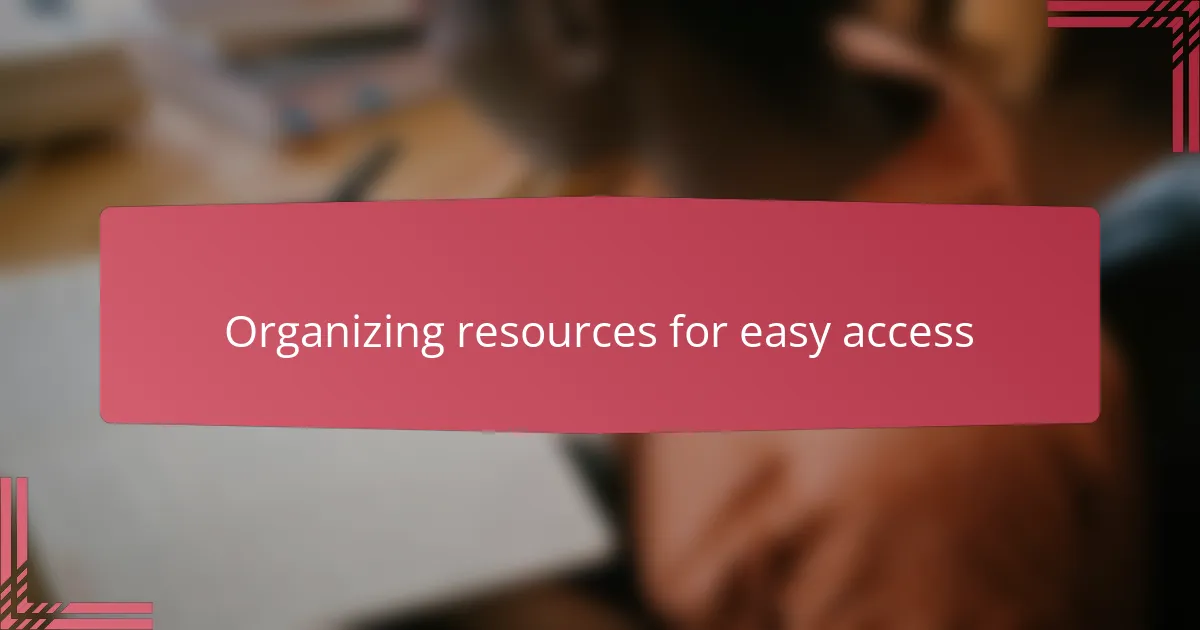
Organizing resources for easy access
Organizing resources for easy access transformed how I approached remote teaching. Instead of scrambling during lessons, I created folders sorted by themes and grade levels—this simple system saved me time and frustration. Have you ever felt that moment of relief when you find exactly what you need without sifting through endless files?
I also took advantage of digital tools like shared drives and bookmarking apps to keep everything accessible anywhere. From my experience, having resources well-organized not only helped me stay calm but also allowed me to respond quickly to students’ questions and interests. Isn’t it empowering to feel in control of your teaching materials, especially when everything else feels uncertain?
Finally, I label all files with clear, descriptive names and include brief notes about their use or key discussion points. This little habit made revisiting or adapting lessons much easier, especially during busy weeks. Have you noticed how a small organizational step can multiply your efficiency and reduce stress? Trust me, it’s a game changer.
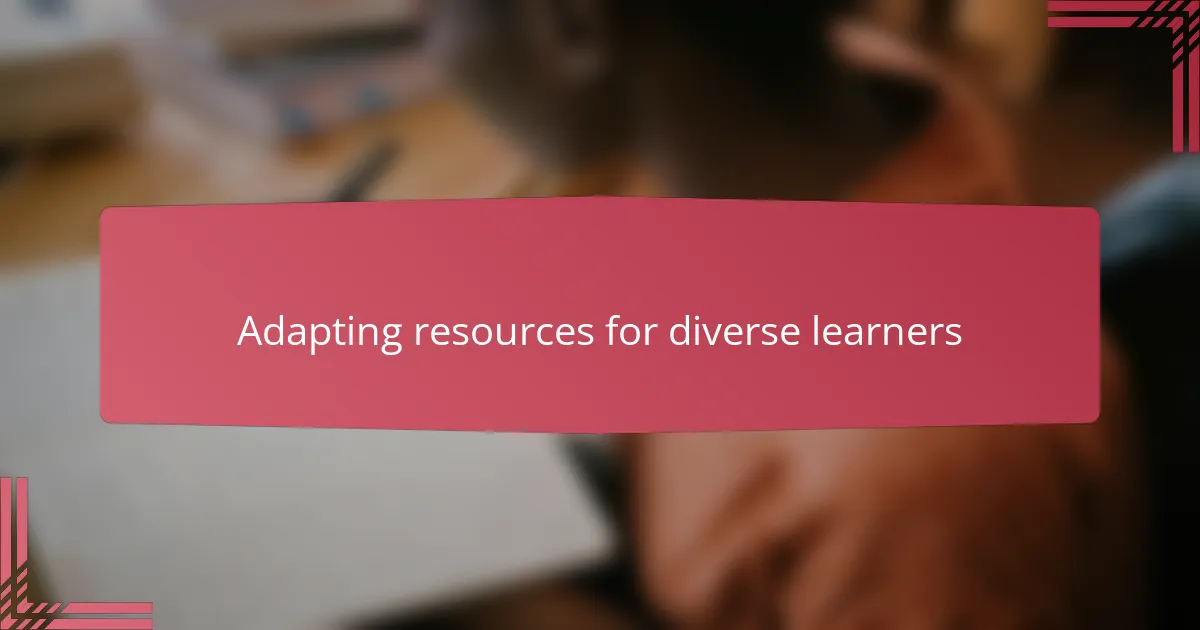
Adapting resources for diverse learners
Adapting resources for diverse learners meant more than just tweaking content; it was about honoring the unique ways each student engages with material. I remember redesigning a lesson to include audio, visual, and hands-on elements after realizing some of my students struggled with text-heavy slides. Have you noticed how offering different entry points can suddenly make a topic accessible—and meaningful—to everyone?
It also required me to be mindful of language simplicity without diluting critical ideas. Striking that balance was tricky at times, but the reward came when a student shared how they finally felt they “got” the subject because the explanation spoke their language. Isn’t it fulfilling when inclusivity leads to genuine understanding?
Lastly, I learned the importance of flexibility—being ready to pivot when a resource didn’t resonate as expected. Once, a group project designed for in-person collaboration floundered online, so I adapted the instructions for individual reflection instead. That moment reminded me that responsiveness is key in honoring diverse learning needs, especially in remote settings.
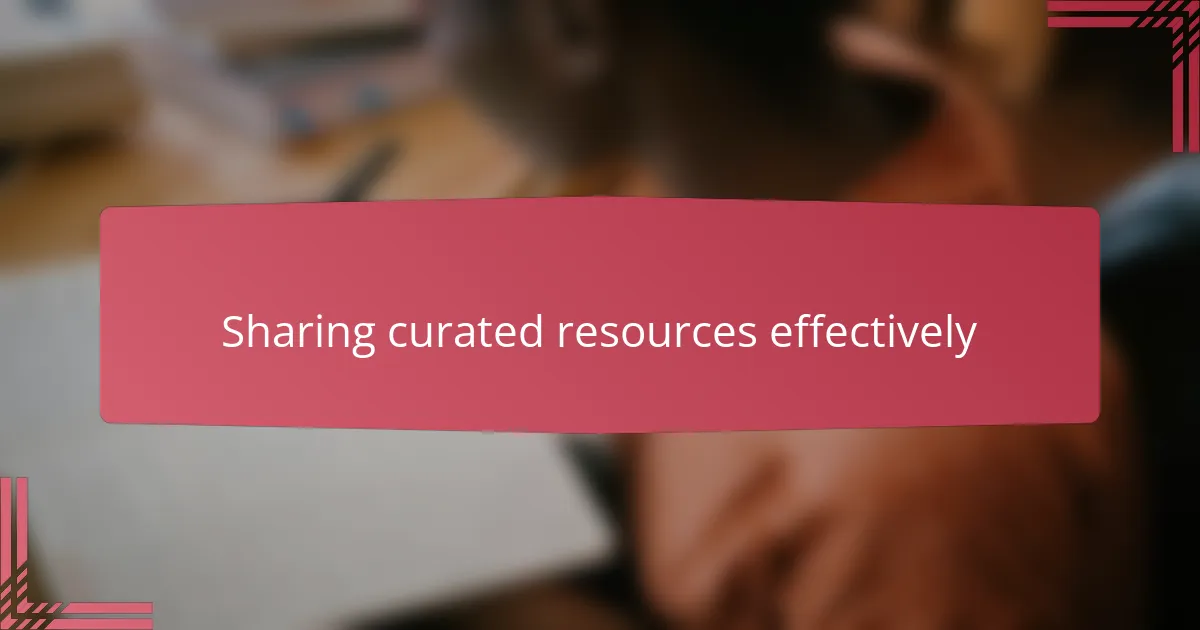
Sharing curated resources effectively
Sharing curated resources effectively means creating a clear and accessible pathway for others to find and use them without getting lost in a sea of links. I once shared a list of activist articles in a cluttered document, only to hear from colleagues that it was overwhelming rather than helpful. That experience taught me to present resources with thoughtful organization and concise descriptions—making it easier for people to snap up what they need.
I also find that offering context for each resource transforms a passive list into an invitation for engagement. When I add a brief note explaining why a video or article matters and how it connects to activist teaching, it sparks curiosity and encourages deeper exploration. Have you ever clicked on a resource just because the recommendation felt personal? That small connection makes all the difference.
Finally, I rely on multiple platforms to share resources—whether through shared drives, newsletters, or collaborative social media groups—to meet educators where they are. I remember the relief of a peer who found a crucial lesson plan in a weekly email at just the right moment. Isn’t it amazing how thoughtful sharing can extend the reach and impact of carefully selected materials?